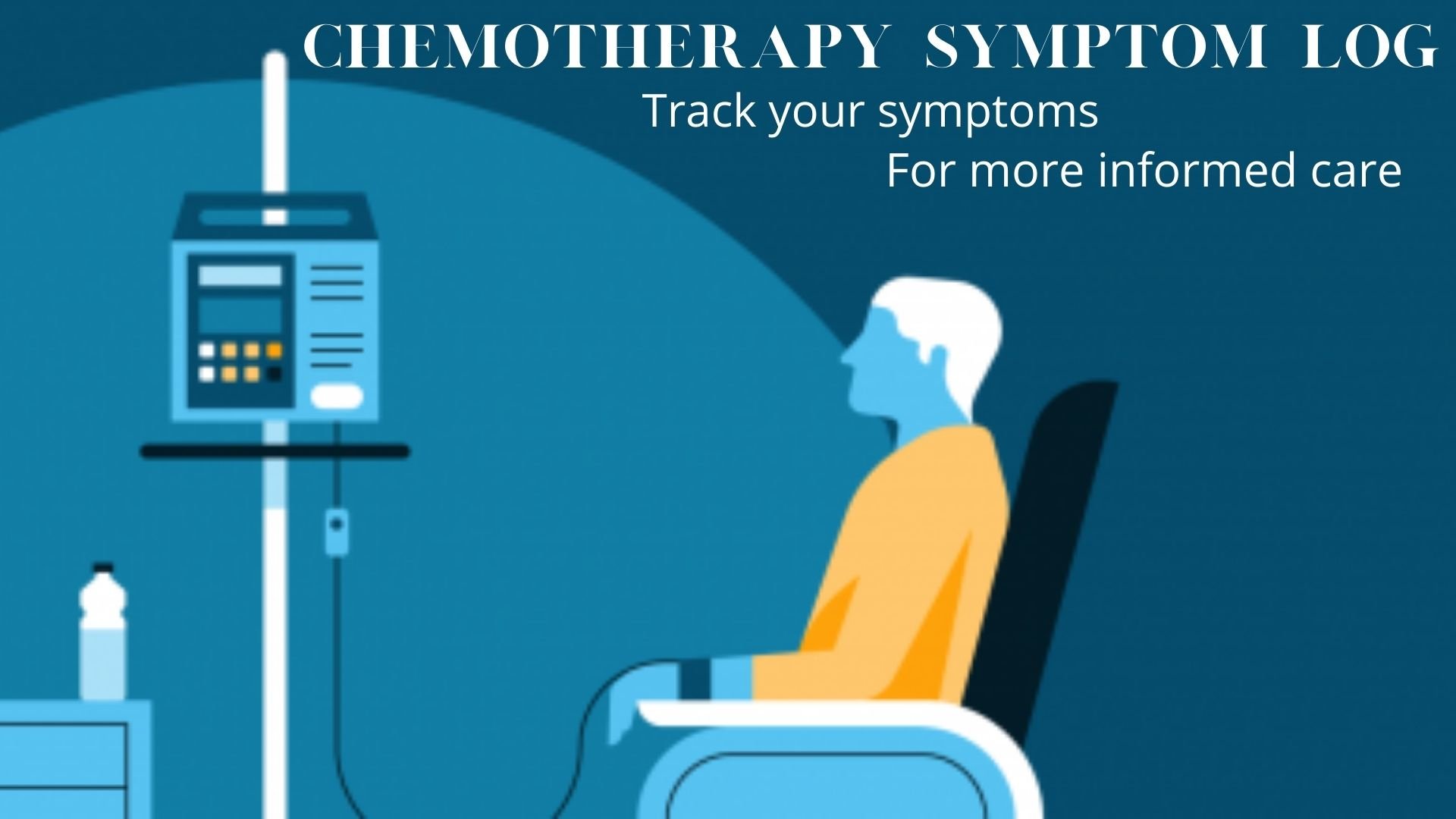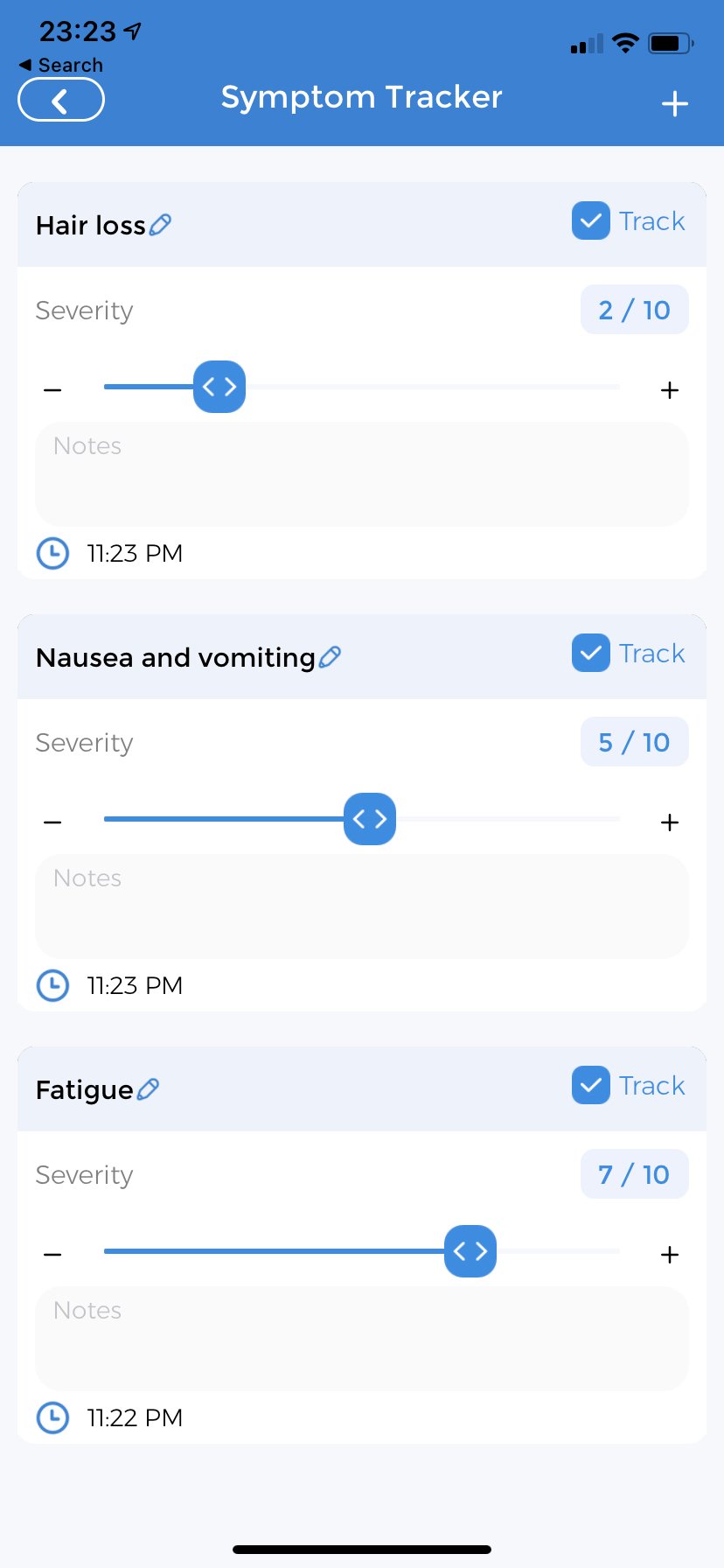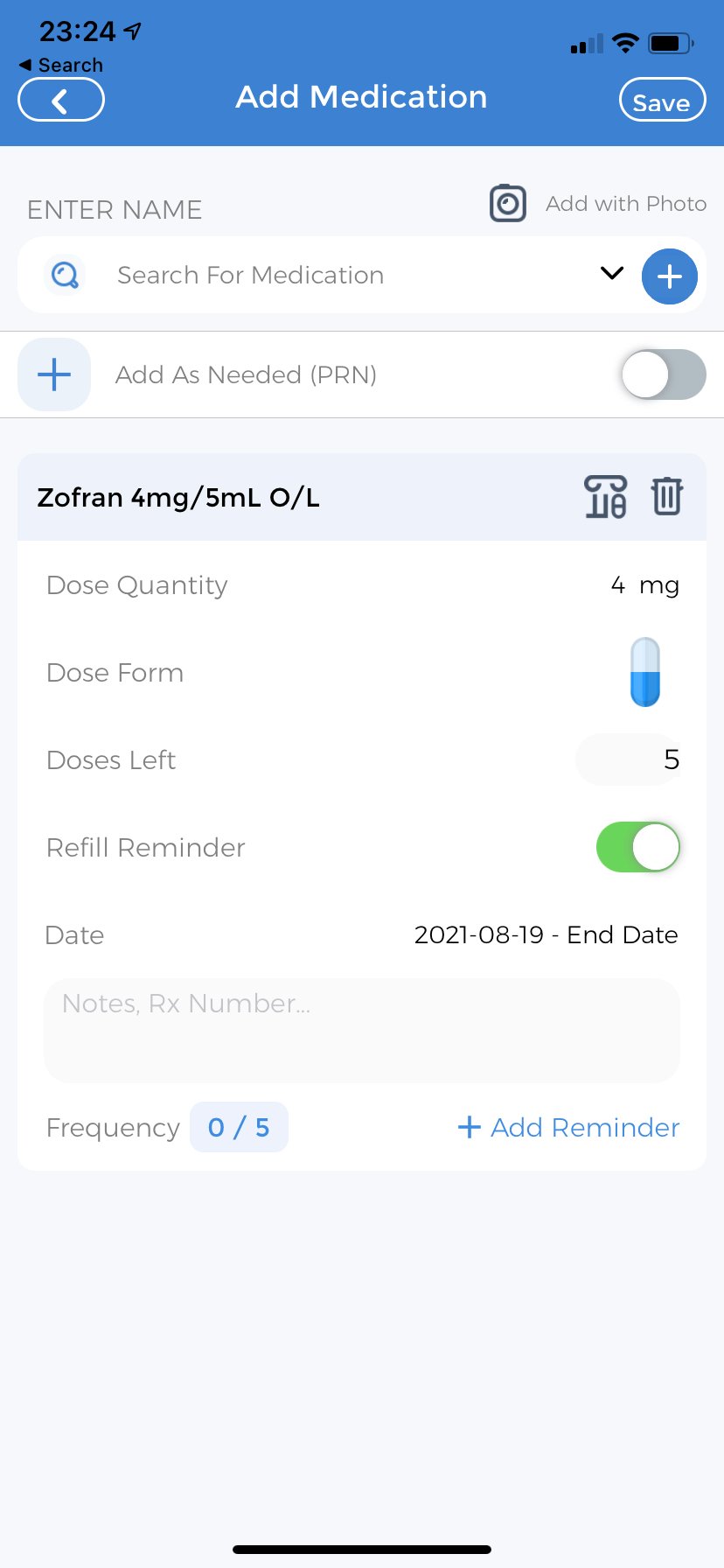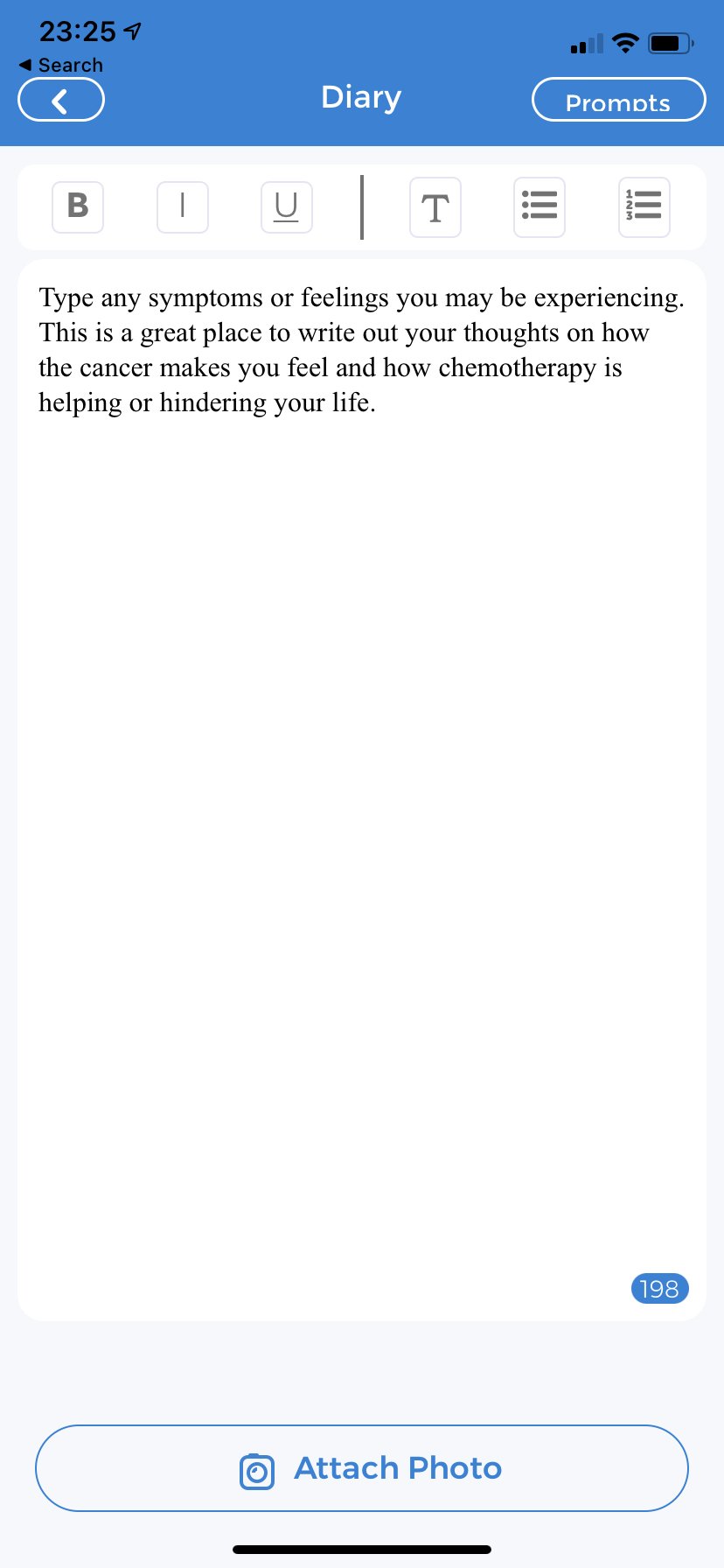
Do you or someone you know suffer from cancer? Have you had to go through chemotherapy treatment? Felt symptoms develop and wane as the medication takes effect? Do you feel like your life would be easier if you had some way of tracking all these symptoms? A great solution to look into is a chemotherapy symptom log. There are many applications of chemotherapy symptom logs available, but this article will focus on CareClinic and how it can best be used as a chemotherapy symptom log.
What is Chemotherapy and How Does it Work?
Chemotherapy is a drug treatment that uses chemicals to kill cells in your body. Chemotherapy is most often used on cancer cells, as cancer cells grow faster than most normal cells. Doctors prescribe chemotherapy in combination with radiation therapy, and sometimes surgery. The effectiveness of treatment depends on what stage of cancer you are fighting. Chemotherapy works by attacking cancer cells throughout the body or targeting specific sites where cancer is rampant. The drugs prevent cell division, target cancer cells’ food sources (such as enzymes and hormones), and trigger apoptosis (suicide) of cancer cells.
How Chemotherapy Affects Your Body
- Cures cancer cells – As mentioned above, chemotherapy kills fast-growing cells. In many cases, it can be the sole treatment to kill cancer.
- Kills hidden cancer cells – Sometimes doctors pair surgery and chemotherapy together. Surgery gets the bulk of the cancer cells out of the body. The areas too dangerous to excise are then targeted by chemotherapy.
- Prepares you for other treatments – Sometimes chemotherapy is used in preparation for surgery or radiation. It is used to shrink the size of the tumor to make removal easier.
- Eases signs and symptoms – Chemotherapy can help relieve or at least reduce signs of cancer by killing some of the cancer cells. This is called palliative care.
While the primary use of chemotherapy is to fight cancer, doctors also use it for:
- Bone Marrow Disease – Chemotherapy is used to prepare the bone marrow for a transplant. You can either get a bone marrow transplant from a match or get a stem cell transplant that helps rejuvenate bone marrow cells.
- Immune System Disorders – A lower dose of chemotherapy can help control an overactive immune system in diseases such as lupus and rheumatoid arthritis.
Types of Chemotherapy Treatment
- Intrathecal Chemotherapy – If you have cancer in the space around your brain and spinal cord it could be very difficult to operate. Chemotherapy drugs injected into the fluid-filled space prevents cancer from reaching other parts of your body.
- Intravesical Chemotherapy – This type of chemotherapy focuses on bladder cancer. The chemotherapy or chemo drugs enter straight into the bladder through a catheter. The drugs actively kill growing cancer cells.
- Intraperitoneal Chemotherapy – The peritoneum covers the surface of the inside of the abdomen and surrounds the intestine, liver and stomach. Medication placed directly in your abdomen kills actively growing cells. It is commonly used to treat ovarian cancer.
- Intravenous (IV) Chemotherapy – Many drugs require injection directly into a vein. Treatment takes a few minutes to a few hours. This is the most common way to administer chemotherapy.
- Oral Chemotherapy – You can take some drugs by mouth. They are in pill, capsule, or liquid form. Some drugs you take daily while others you take less often.
- Topical Chemotherapy – Some chemotherapies come in cream form. Apply them to your skin at home and see the effect it has on your cancer.
Other Cancer Drug Treatments You Should Know
Some doctors recommend non-traditional drug treatments to cure cancer. These treatments have different side effects and are newer:
- Hormone Therapy – This treatment changes the number of hormones in your body. Hormones are chemicals you produce naturally. They control certain activities of cells and organs. Doctors recommend this type of therapy because hormone levels control several types of cancers, including breast and prostate.
- Targeted Therapy – These treatments target and disable genes or proteins found in cancer cells that cancer needs to grow.
- Immunotherapy – This type of treatment helps your body’s natural defense system fight cancer. It is now coupled with more traditional treatment methods in a lot of cancers.
How Doctors Determine Your Chemotherapy Plan
There are a few factors doctors take into consideration when building a treatment plan. The worse the symptoms are, the more aggressive the plan:
- Type of Cancer
- Stage of Cancer – cancer has four technically different stages increasing in intensity
- Stage 0 – This stage describes cancer in situ or “in place.” Stage 0 cancers have not spread to nearby tissues. This stage of cancer is often highly curable, usually by removing the entire tumor with surgery.
- Stage I – This stage is usually small cancer or tumor that has not grown deeply into nearby tissues. It also has not spread to the lymph nodes or other parts of the body. It is coined early-stage cancer.
- Stage II and Stage III – These 2 stages indicate larger cancers or tumors that have grown more deeply into nearby tissue. They may have also spread to lymph nodes but not to other parts of the body.
- Stage IV – This stage means that cancer has spread to other organs or parts of the body. It may also be called advanced or metastatic cancer.
- Overall Health
- Previous Cancer Treatments
- A Patient’s Goals and Preferences
It is possible to move between stages during chemotherapy treatment. Doctors adjust treatment plans often in accordance with changing symptoms. This is why it is so important to keep a chemotherapy symptom log, to make tracking your changing health needs easier.
Digital Health Support for Chemotherapy
The CareClinic app is an all-in-one care app. Anyone can use and access the interface 24 hours a day. The app has a symptom tracker that allows you to create a chemotherapy symptom log. It also has a medication and nutrition tracker as well as a diary to help holistically track your health. You also have access to hundreds of blog articles within the website. The most unique part of the app is the ability to create your own personalized care plan. Your doctor and family members can have access to the plan. This makes treatment easy.
Symptom Tracking Through a Chemotherapy Symptom Log

The other great part of the symptom tracker is you can change symptoms after chemotherapy. To get a baseline understanding of how your body reacts to the chemotherapy drugs, you can track any positive or negative changes in nausea, headaches or other side effects after the treatment.
Medication Tracker in Chemotherapy Symptoms Log
Here you can search for a medication and add it to the tracker. The tab asks for a number of
- Dose quantity
- Dose form (tablet, liquid, etc.)
- How many doses you have left
- When to refill your medication
- When you start and finish your tablets
This is a very helpful feature for doctors who have started you on medication and need to regularly stay up-to-date with the effects. This is especially useful when doctors are tracking in conjunction with your symptoms. They can increase or decrease doses of nausea medication, sleeping pills etc. based on your symptom entries every few weeks. This ensures you get the best overall care when battling cancer. This is not only helpful for doctors but also primary caregivers who can keep up-to-date with your symptoms and medications throughout the course of treatment.
Helpful Resources for Chemotherapy Patients
CareClinic content is created by licensed medical writers and reviewed by clinicians. This ensures the information you read is medically accurate, actionable, and tailored for people managing serious health conditions like cancer.
Tracking Chemotherapy Symptoms

Another great feature is the journal prompts. With chemotherapy, it is necessary to write about how you are feeling. Cancer is a lonely experience because no matter how many people you have as support, no one is going through what you are going through. The best outlet for emotional baggage and stress that could affect your recovery is through the diary. Write about anything, whether it’s bad feelings or you want to document a good day. If you do not know where to start the prompts can help.
The premium account has access to 16 journal prompts. You can also add lists, bold, italicize, and underline important statements. You can change the color of the text to remember important milestones. Finally, you can add photos to personalize your diary. They can range from family and friends to motivational pictures and quotes. Anything you want to remember in picture form is worth adding.
Individualized Care Plans for Chemotherapy
As mentioned before within your plan, you have an option to add caregivers ranging from doctors to family members. Each person can add information to your plan at any time, allowing for cohesive care. This makes keeping track of your medications and chemotherapy needs extremely easy. The most important thing about the care plan is that it provides a clear picture of your medical history and medical needs in one place.
You can also add additional features such as nutrition tracking and sleep tracking. These trackers are useful in seeing how you react to certain foods after chemotherapy treatment and how well you sleep after getting a dose of chemo drugs. Doctors can use this additional information to ensure you get the best treatment and help possible. In conjunction with the chemotherapy symptom log, doctors will recommend certain foods to eat or stay away from that will help with nausea and vomiting. This will allow you to make informed decisions about what kind of lifestyle is best for you while going through treatment and how to make the best out of an unfortunate situation.
Digital Health Assistance for Chemotherapy
The CareClinic app is available on three sites: the App Store for IOS users, Google Play for Android users and on the CareClinic website for direct download.
Having cancer and going through chemotherapy can be a lonely process. It is also more than likely that cancer will become a lifelong illness. The best thing you can do is track your symptoms, eating, sleeping and medication habits to make your life a little easier. Every little action helps make your next treatment that much better. Use the CareClinic app and track every symptom, relief point and emotional thought you associate with chemotherapy. Expelling negative thoughts and focusing on clean recovery will help in the long run. Get tracking today.


